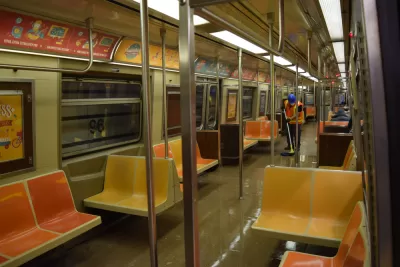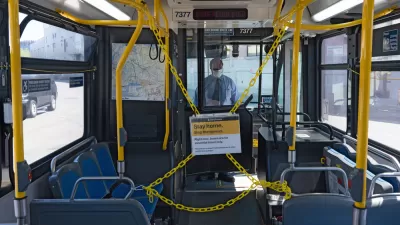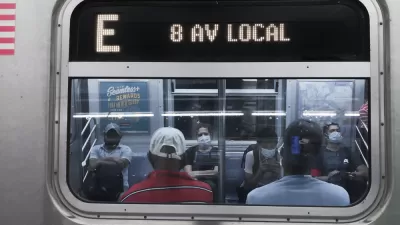A noticeable increase in subway ridership has been taking place on subway trains in New York City, but not enough to call it a comeback, yet.

"Subway ridership is ticking up slowly but surely, new turnstile data show, but straphangers are still not coming back as fast as drivers," reports Dave Colon from New York City.
The findings come from Todd Schneider, who provides analysis of publicly available ridership data for the New York Metropolitan Transportation Authority (MTA) subway system. The MTA subway system counted 600,952 riders on May 15, the highest number since the system counted 676,556 riders on March 27.
The information comes with a note of caution: the slight increase on the New York subway is nowhere near enough to overcome the system's fiscal emergency, and most of the city is still staying home, so a return to normal is not suddenly imminent. Moreover, the increase in subway ridership is slower than the number of drives returning to the streets in the city. "Up on the streets, vehicle miles traveled rose from 21,630,000 miles on March 30, one week into PAUSE, to 34,240,000 miles on May 8, an increase of 58 percent," according to Colon.
FULL STORY: Nature Is Healing: Riders Are Slowly Returning To The Subway

Trump Administration Could Effectively End Housing Voucher Program
Federal officials are eyeing major cuts to the Section 8 program that helps millions of low-income households pay rent.

Planetizen Federal Action Tracker
A weekly monitor of how Trump’s orders and actions are impacting planners and planning in America.

Ken Jennings Launches Transit Web Series
The Jeopardy champ wants you to ride public transit.

‘Minnesota Nice’ Isn’t so Nice When You Can’t Find a Place to Live
The Economic Development and Housing Challenge Program can help address the scourge of homelessness among Indigenous people.

NYC Open Streets Organizers Call for City Support
The number of open streets projects has dropped year after year as volunteer groups struggle to fund and staff them.

Crime Continues to Drop on Philly, San Francisco Transit Systems
SEPTA and BART both saw significant declines in violent crime in the first quarter of 2025.
Urban Design for Planners 1: Software Tools
This six-course series explores essential urban design concepts using open source software and equips planners with the tools they need to participate fully in the urban design process.
Planning for Universal Design
Learn the tools for implementing Universal Design in planning regulations.
Heyer Gruel & Associates PA
Ada County Highway District
Institute for Housing and Urban Development Studies (IHS)
City of Grandview
Harvard GSD Executive Education
Toledo-Lucas County Plan Commissions
Salt Lake City
NYU Wagner Graduate School of Public Service




























